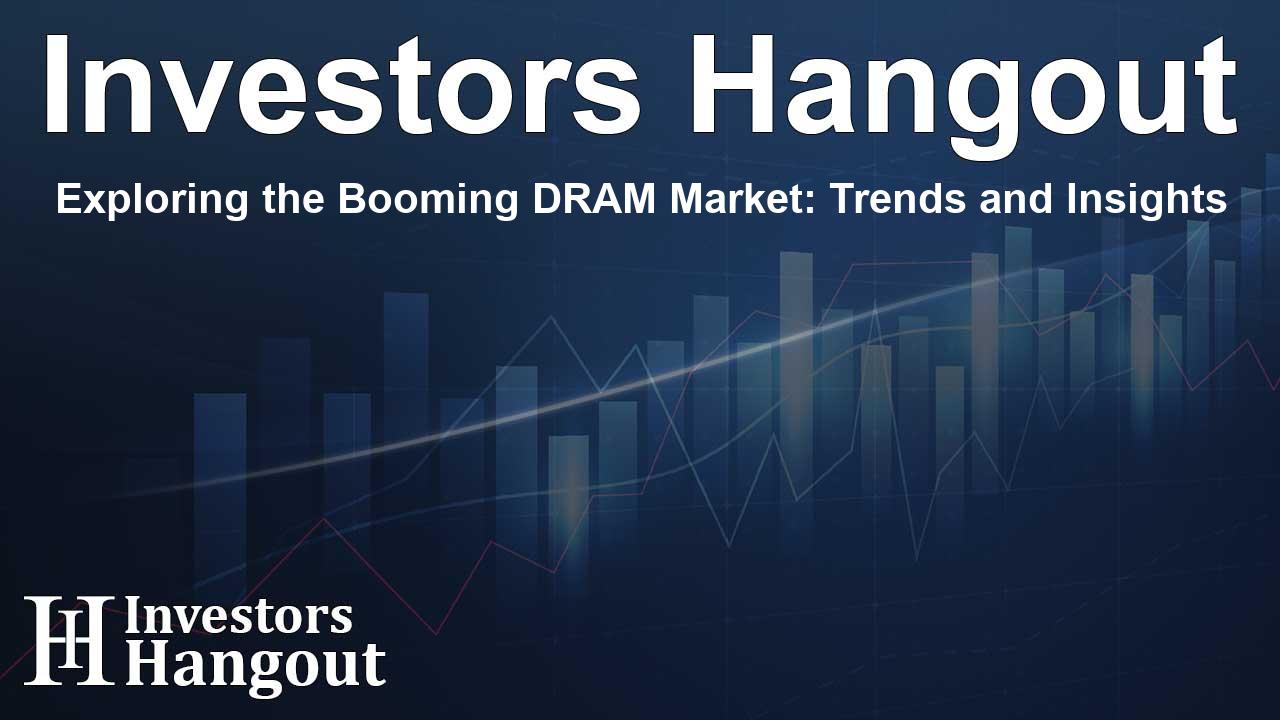Exploring the Booming DRAM Market: Trends and Insights

Diving into the DRAM Market Growth
The world of Dynamic Random Access Memory (DRAM) is witnessing remarkable advancements and growth. As we embark on a new era where technology influences every aspect of our lives, the DRAM market is set to increase by an estimated USD 258.8 billion from 2025 to 2029. This stunning expansion can be attributed mainly to the rise of smart city initiatives, where innovative technologies are essential for enhancing urban infrastructure.
Transformation Driven by Technology
Artificial Intelligence (AI) is powerfully driving market transformation. As sectors like automotive, cloud computing, and gaming evolve, the demand for efficient memory solutions is rising. DRAM’s role as a critical component in memory architecture for personal computing devices, mobile gadgets, and automotive applications marks its importance. Notably, semiconductors like DDR4 and newer iterations such as DDR5 are changing the landscape, enabling faster processing and a more robust performance across various applications.
Market Insights and Trends
According to recent analysis, the growth momentum of the DRAM market is sustained by several factors. The automotive sector, with its heightened focus on Advanced Driver-Assistance Systems (ADAS) and autonomous vehicle technologies, is a significant player in this increase in demand. As vehicles require sophisticated memory systems for seamless operation, suppliers are responding with innovations like LPDDR4(X) chips, specifically engineered for optimal performance under stringent automotive conditions.
Key Drivers of Market Expansion
The ongoing shift towards smart technologies heavily influences the electronics market, underscoring the importance of DRAM in sectors such as generative AI, mobile devices, and high-performance computing. Power-saving capabilities are critical as industries increasingly emphasize sustainability. Firms like Micron Technology, Intel, and AMD are at the forefront, driving innovations that enhance efficiency and performance in their DRAM offerings.
Challenges in the DRAM Landscape
While the prospects for DRAM are promising, the market also faces several challenges. As more advanced memory technologies emerge, such as Phase-change Memory and Magneto-resistive RAM, DRAM manufacturers must adapt to maintain their competitive edge. These advancing technologies offer enticing solutions with faster access times and lower power consumption, potentially disrupting the traditional DRAM market.
Segment Overview
The DRAM market can be segmented into various applications, ranging from computers and mobile devices to consumer electronics and networking devices. Each segment showcases unique trends and demands that shape the overall market dynamics. For instance, the rise of mobile devices has significantly impacted the demand for DRAM, necessitating new strategies from manufacturers as computer sales begin to stabilize.
Technological Innovations and Future Outlook
As technology continues to unfold, the future of DRAM remains tightly correlated with these advancements. The development of advanced data processing systems, driven by a surge in cloud computing and the Internet of Things (IoT), emphasizes the importance of robust and efficient memory solutions. The DRAM industry must stay attuned to these shifts, ensuring they are equipped to meet the ever-evolving demands of electronic devices.
Conclusion
In summary, the DRAM market is positioned for significant growth as it adapts to the rapid technological changes shaping our daily lives. With a robust focus on sustainability and efficiency, market players are expected to continue innovating and pushing the boundaries of what's possible. This vibrant market landscape promises exciting opportunities for growth and advancement in the years to come.
Frequently Asked Questions
What is DRAM and why is it important?
Dynamic Random Access Memory (DRAM) is a type of semiconductor memory crucial for storing data temporarily, widely used in devices like computers and smartphones.
How is AI impacting the DRAM market?
AI is propelling the DRAM market by increasing demand for efficient memory solutions in various sectors, significantly enhancing performance and capabilities.
What challenges does the DRAM market face?
The DRAM market faces challenges from emerging memory technologies that offer faster performance and lower power consumption, potentially destabilizing the current market dynamics.
What sectors are driving demand for DRAM?
Key sectors driving demand for DRAM include automotive technologies, cloud computing, mobile devices, and gaming, highlighting the versatility of DRAM applications.
What is the future outlook for the DRAM market?
The future outlook for the DRAM market is positive, with expected growth driven by technological advancements and increasing demand for electronic devices globally.
About The Author
Contact Riley Hayes privately here. Or send an email with ATTN: Riley Hayes as the subject to contact@investorshangout.com.
About Investors Hangout
Investors Hangout is a leading online stock forum for financial discussion and learning, offering a wide range of free tools and resources. It draws in traders of all levels, who exchange market knowledge, investigate trading tactics, and keep an eye on industry developments in real time. Featuring financial articles, stock message boards, quotes, charts, company profiles, and live news updates. Through cooperative learning and a wealth of informational resources, it helps users from novices creating their first portfolios to experts honing their techniques. Join Investors Hangout today: https://investorshangout.com/
The content of this article is based on factual, publicly available information and does not represent legal, financial, or investment advice. Investors Hangout does not offer financial advice, and the author is not a licensed financial advisor. Consult a qualified advisor before making any financial or investment decisions based on this article. This article should not be considered advice to purchase, sell, or hold any securities or other investments. If any of the material provided here is inaccurate, please contact us for corrections.
